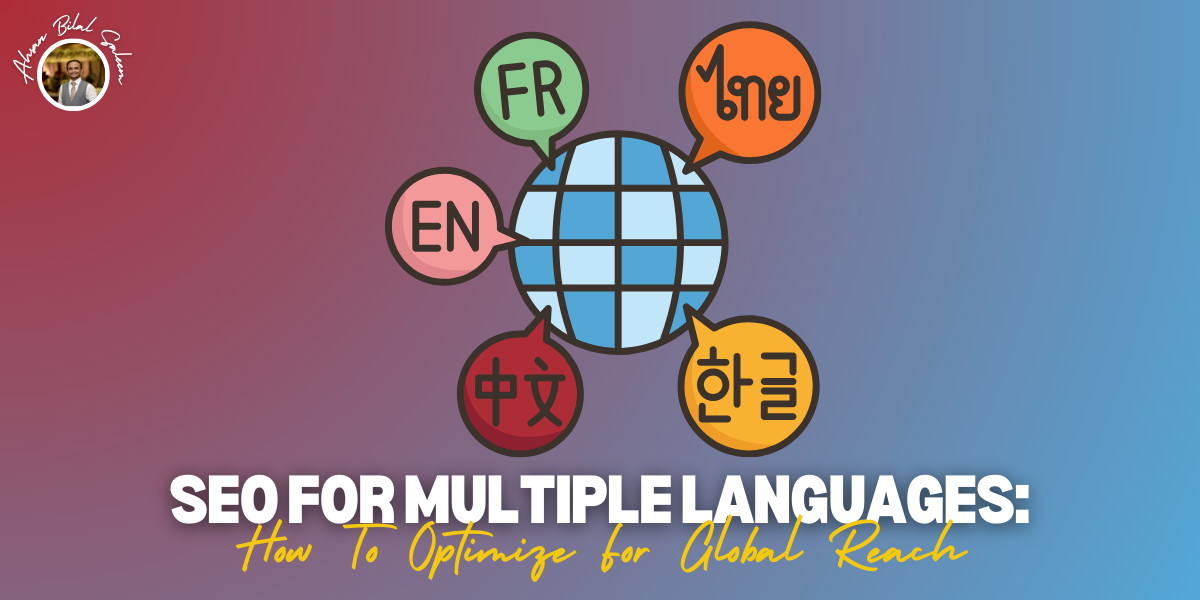SEO For Multiple Languages: How To Optimize For Global Reach
In today’s interconnected world, businesses no longer operate within the confines of borders. With the rise of e-commerce, global reach is more attainable than ever. However, expanding your website’s reach to different countries and cultures requires more than just translation—it requires a well-thought-out multilingual SEO strategy. Optimizing your website for multiple languages is crucial for tapping into new markets, enhancing user experience, and boosting your search engine rankings across the globe. This article will guide you through the essential steps to effectively SEO for multiple languages and achieve global reach.
Understand the Importance of Multilingual SEO
Before diving into the technical aspects, it’s essential to understand why multilingual SEO matters. When users search for products, services, or information in their native language, they are more likely to engage with content that resonates with them linguistically and culturally. A well-executed multilingual SEO strategy ensures that your website ranks well in search engines across different regions, making your content accessible to a broader audience. By optimizing for multiple languages, you not only increase your website’s visibility but also build trust with users, leading to higher conversion rates.
Conduct Thorough Keyword Research for Each Language
Keyword research is the foundation of any successful SEO strategy, and it’s no different for multilingual SEO. However, it’s important to note that direct translation of keywords is often ineffective. Language nuances, cultural differences, and local search behavior all play a significant role in how users search for information. Use tools like Google Keyword Planner, Ahrefs, or SEMrush to conduct keyword research specific to each target language and region. Recognize watchwords that are significant, have high pursuit volumes, and line up with the purpose of your crowd in every language.
Create Separate URLs for Different Language Versions
When optimizing your website for multiple languages, it’s crucial to create separate URLs for each language version. This can be done through different methods, including subdirectories (e.g., yourdomain.com/en/), subdomains (e.g., en.yourdomain.com), or country-code top-level domains (ccTLDs) (e.g., yourdomain.fr). Each method has its pros and cons, but the key is to ensure that each language version is easily identifiable by both users and search engines. By using separate URLs, you can better target your audience in different regions and improve your website’s SEO performance.
Implement Hreflang Tags Correctly
Hreflang labels are a fundamental part of multilingual SEO. These tags help search engines understand which language version of a page should be displayed to users based on their language preferences and geographic location. By correctly implementing hreflang tags, you can prevent duplicate content issues and ensure that the appropriate language version of your content is shown to the right audience. The hreflang tag should be placed in the HTML head of each page, specifying the language and region (e.g., hreflang=”en-us” for English speakers in the United States).
Prioritize High-Quality Translation and Localization
Simply translating your content word-for-word is not enough. Effective multilingual SEO requires high-quality translation and localization to ensure that your content resonates with the target audience. Localization goes beyond translation—it involves adapting your content to fit the cultural and linguistic nuances of each region. This includes modifying idioms, currency formats, date formats, and even images to align with local preferences. High-quality, culturally relevant content not only enhances user experience but also improves your website’s credibility and SEO rankings in different regions.
Optimize Meta Tags, Headings, and Alt Text for Each Language
Just as you would optimize meta tags, headings, and alt text in your primary language, it’s equally important to do so for each language version of your website. This includes translating and localizing title tags, meta descriptions, and headings to ensure they are relevant and compelling to your target audience. Additionally, optimize image alt text in each language to improve accessibility and enhance your SEO efforts. Remember, search engines rely on these elements to understand the content of your pages, so make sure they are accurately translated and optimized.
Monitor and Analyze Performance Across Different Languages
Once your multilingual SEO strategy is in place, it’s important to continuously monitor and analyze the performance of each language version of your website. Use tools like Google Analytics, Google Search Console, and other SEO platforms to track key metrics such as organic traffic, bounce rates, conversion rates, and keyword rankings for each language. Regularly review this data to identify areas for improvement and adjust your strategy accordingly. By keeping a close eye on performance, you can ensure that your multilingual SEO efforts are yielding the desired results and make data-driven decisions to enhance your global reach.
Build High-Quality Backlinks from Local Websites
Backlinks remain a critical factor in SEO, and this holds true for multilingual websites as well. To boost your rankings in different regions, focus on building high-quality backlinks from local websites, blogs, and directories that are relevant to your industry. Local backlinks signal to search engines that your content is valuable and relevant to users in that specific region, which can significantly improve your website’s authority and visibility in local search results. Consider collaborating with local influencers, guest posting on region-specific blogs, and listing your website in local business directories to enhance your backlink profile.
Optimize for Mobile and Voice Search
With the increasing use of mobile devices and voice search, optimizing your multilingual website for these trends is essential. Ensure that your website is mobile-friendly and loads quickly across all devices. Additionally, consider optimizing your content for voice search by incorporating long-tail keywords and natural language phrases that users are likely to speak. Voice search is particularly important for multilingual SEO, as users may phrase their queries differently in different languages. By optimizing for mobile and voice search, you can stay ahead of the competition and cater to the growing number of users who rely on these technologies.
Conclusion
SEO for multiple languages is a powerful way to expand your global reach and connect with diverse audiences. By conducting thorough keyword research, creating separate URLs, implementing hreflang tags, prioritizing high-quality translation and localization, and continuously monitoring performance, you can effectively optimize your multilingual website for success. Remember, a well-executed multilingual SEO strategy not only improves your search engine rankings but also enhances user experience, builds trust, and drives conversions across the globe. As you embark on your multilingual SEO journey, keep these best practices in mind to achieve lasting success in the global market.










